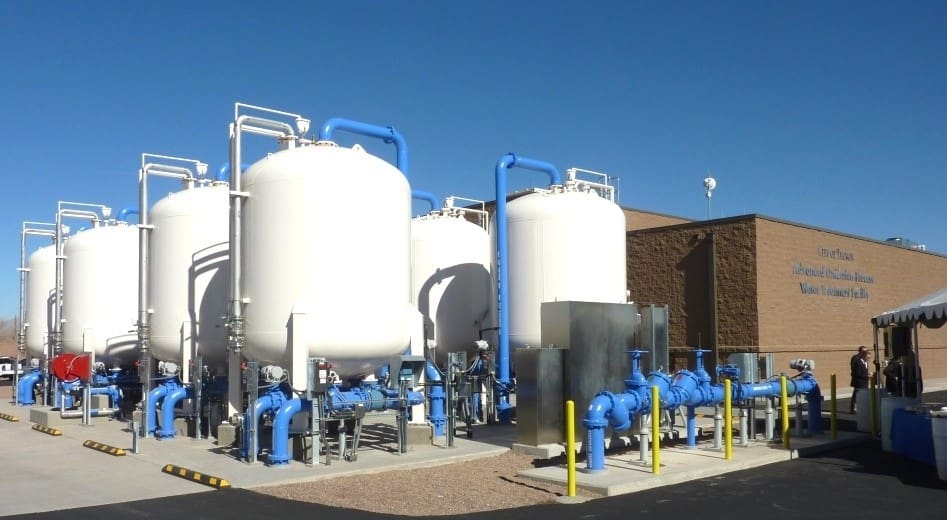Comprehensive PFAS Management in Residential Areas
Advanced Methods for Efficient PFAS Contamination Elimination
The consistent difficulty of PFAS contamination requires the expedition of sophisticated removal techniques that can properly resolve these unsafe materials. Innovative innovations, such as advanced oxidation processes and various adsorption strategies, have actually arised as promising services in mitigating PFAS from affected environments.
Understanding PFAS Qualities
Although per- and polyfluoroalkyl compounds (PFAS) have actually been widely utilized in numerous commercial and consumer items as a result of their special residential or commercial properties, their persistence in the setting presents considerable challenges to public wellness and safety and security. PFAS are a group of artificial chemicals characterized by a carbon-fluorine bond, among the toughest chemical bonds recognized, which adds to their phenomenal security and resistance to destruction. This security permits PFAS to collect in the environment and living microorganisms, resulting in potential damaging health and wellness effects.
These very same homes add to their ecological perseverance, as PFAS do not conveniently damage down via natural procedures. Comprehending the chemical buildings of PFAS is essential for developing effective strategies to take care of and mitigate their environmental effect.
Ingenious Remediation Technologies
The determination of PFAS in the atmosphere has spurred the development of ingenious remediation technologies focused on efficiently removing these contaminants from affected ecosystems. Among the most promising techniques are advanced oxidation processes (AOPs), which utilize effective oxidants to break down PFAS compounds right into less dangerous materials. AOPs can be tailored to target specific PFAS frameworks, boosting their effectiveness.
One more arising modern technology is using adsorption media, such as triggered carbon and ion exchange resins, which can selectively capture PFAS from contaminated water. These products have shown significant elimination efficiencies, although routine substitute and regeneration are required to keep efficiency.
Membrane purification methods, including reverse osmosis and nanofiltration, are also getting traction in PFAS removal. These approaches can successfully separate PFAS from water, giving a viable solution for treating infected resources. Furthermore, thermal treatment approaches, such as incineration, can disintegrate PFAS into safe results, though they need cautious administration to regulate exhausts.
Collectively, these innovative removal modern technologies represent substantial innovations in the ongoing fight versus PFAS contamination, using different techniques to recover damaged settings and shield public health.

Bioremediation Methods
Bioremediation strategies use a promising method to addressing PFAS contamination by utilizing the natural capacities of microorganisms to weaken these persistent substances (m270 waste management). This technique entails using microorganisms, fungi, and various other microbes that can metabolize or change PFAS substances right into less hazardous results
Recent redirected here innovations in molecular biology and environmental microbiology have actually improved our understanding of microbial communities and their prospective duties in PFAS degradation. Researchers are proactively checking out details strains of bacteria, such as Pseudomonas and Bacillus, which have actually demonstrated the capability to damage down certain PFAS compounds.
Sitting bioremediation techniques, where bacteria are boosted straight in infected environments, can be specifically effective. This strategy typically entails the application of nutrients or electron contributors to advertise microbial development and activity. In addition, ex-spouse situ methods, such as bioreactors, enable regulated conditions that can enhance destruction prices.
In spite of the assurance of bioremediation, challenges stay, consisting of the intricate nature of PFAS compounds and the need for substantial area testing - m270 waste management. Proceeded study and development will be vital Homepage to improve these techniques and examine their performance in varied environmental contexts
Adsorption and Filtering Methods
Resolving PFAS contamination typically includes utilizing adsorption and filtering methods, which are developed to remove these consistent chemicals from water and soil. Among the various strategies, turned on carbon adsorption is commonly utilized as a result of its high surface area and porosity, making it possible for reliable trapping of PFAS molecules. Granular activated carbon (GAC) systems are particularly preferred for dealing with big volumes of contaminated water, while powdered triggered carbon (PAC) can be utilized for smaller-scale applications.
Ion exchange materials additionally reveal guarantee in PFAS removal, operating by trading PFAS ions with less damaging ions in the water. This method has actually shown efficiency in focusing PFAS substances, facilitating their succeeding elimination. Furthermore, membrane purification methods, such as reverse osmosis and nanofiltration, operate by utilizing semi-permeable membranes to separate PFAS from water, properly reducing their focus.
While these methods are effective, they must be carefully selected based upon the specific PFAS substances present and the environmental context. Continual advancements in products science and engineering are leading to the development of unique adsorbents and purification systems that enhance elimination effectiveness and lower operational expenses, thus enhancing overall remediation initiatives.
Regulatory and Policy Considerations
Just how can effective governing frameworks improve the monitoring of PFAS contamination? Detailed policies are vital to make sure a worked with and robust action to the obstacles positioned by per- and polyfluoroalkyl materials (PFAS) Rules can establish clear standards for surveillance, reporting, and remediating PFAS-contaminated sites, fostering responsibility amongst industries and public entities. (m270 waste management)

Additionally, monetary motivations and grants can be incorporated into policies to motivate the adoption of innovative removal technologies. Policymakers ought to likewise focus on research and advancement, making sure that emerging techniques for PFAS removal are confirmed and implemented efficiently.
Additionally, public awareness and interaction are critical components of any regulatory technique, equipping neighborhoods to promote for their health and wellness and safety. Eventually, a well-structured regulative environment will certainly not just boost the management of PFAS contamination yet additionally advertise lasting techniques that protect future generations.
Verdict
In recap, the intricacy of PFAS contamination necessitates the fostering of sophisticated removal approaches. Continued study and advancement in this field continue to be vital to addressing the obstacles positioned by PFAS contamination.